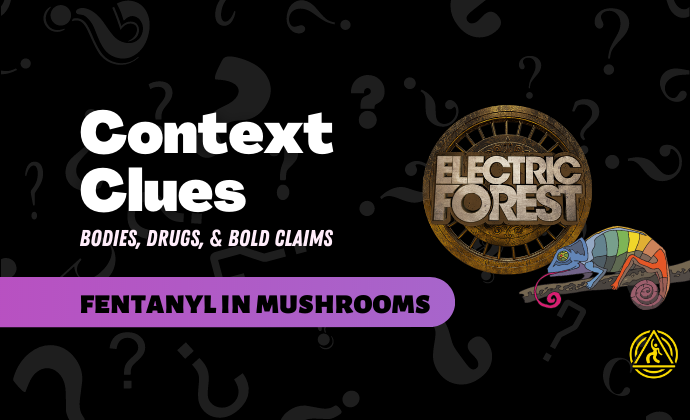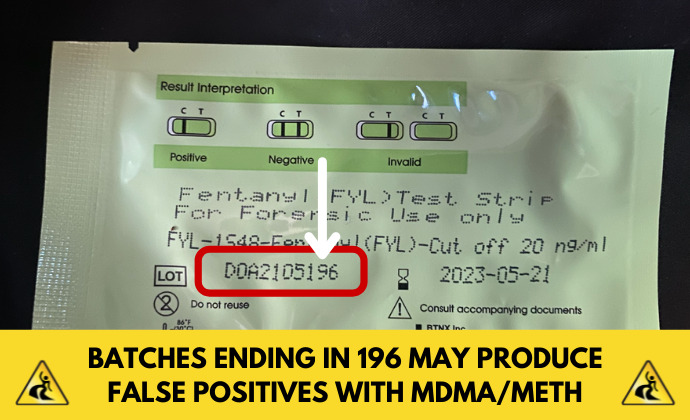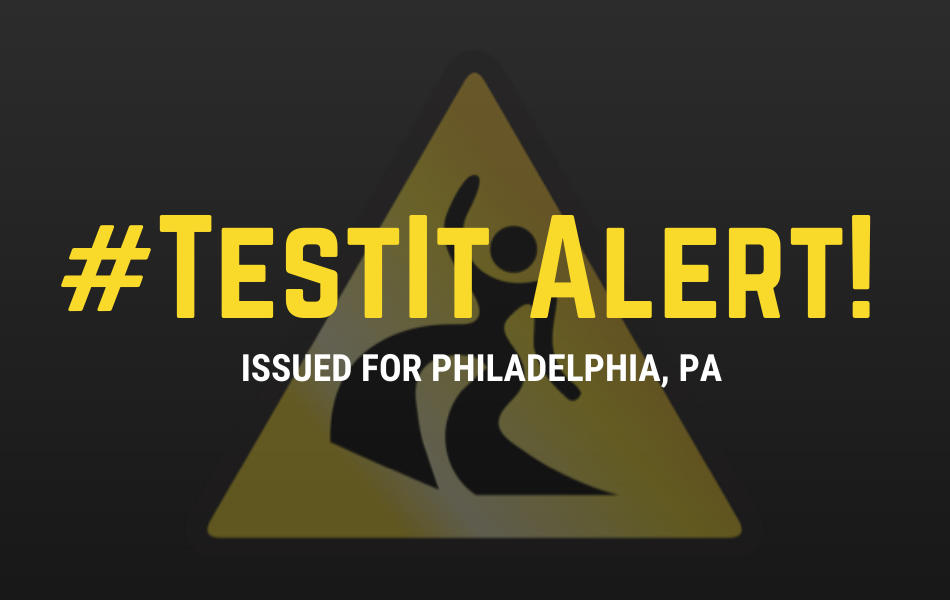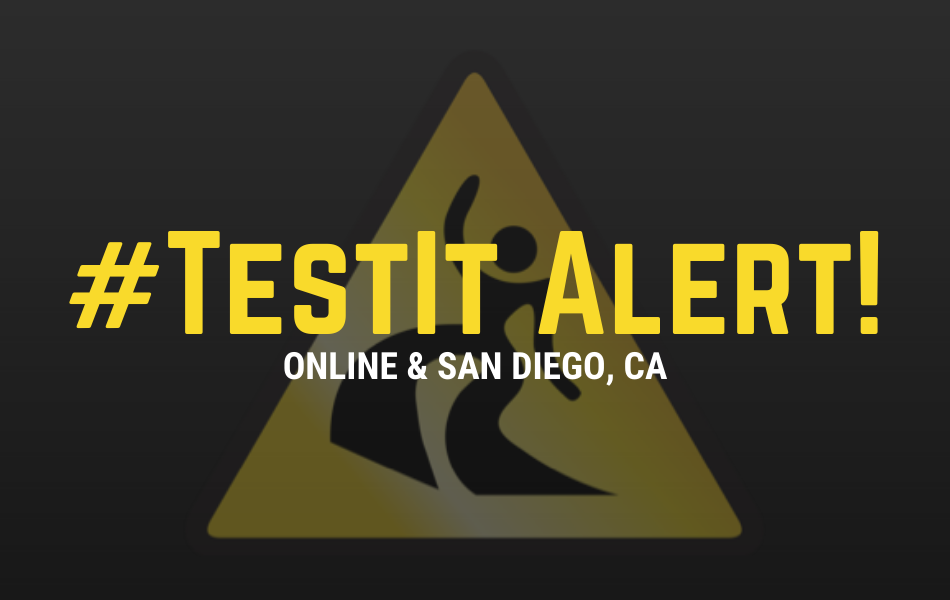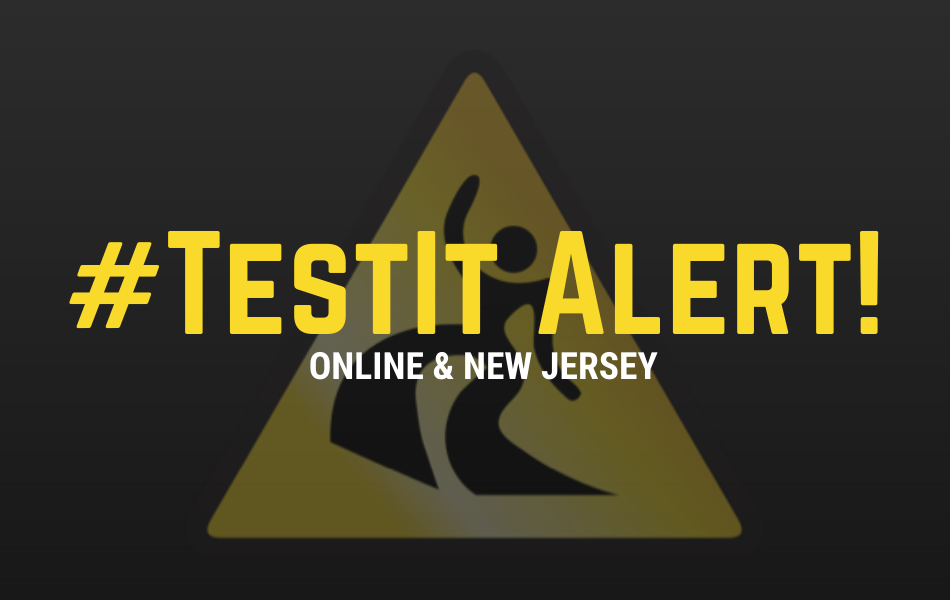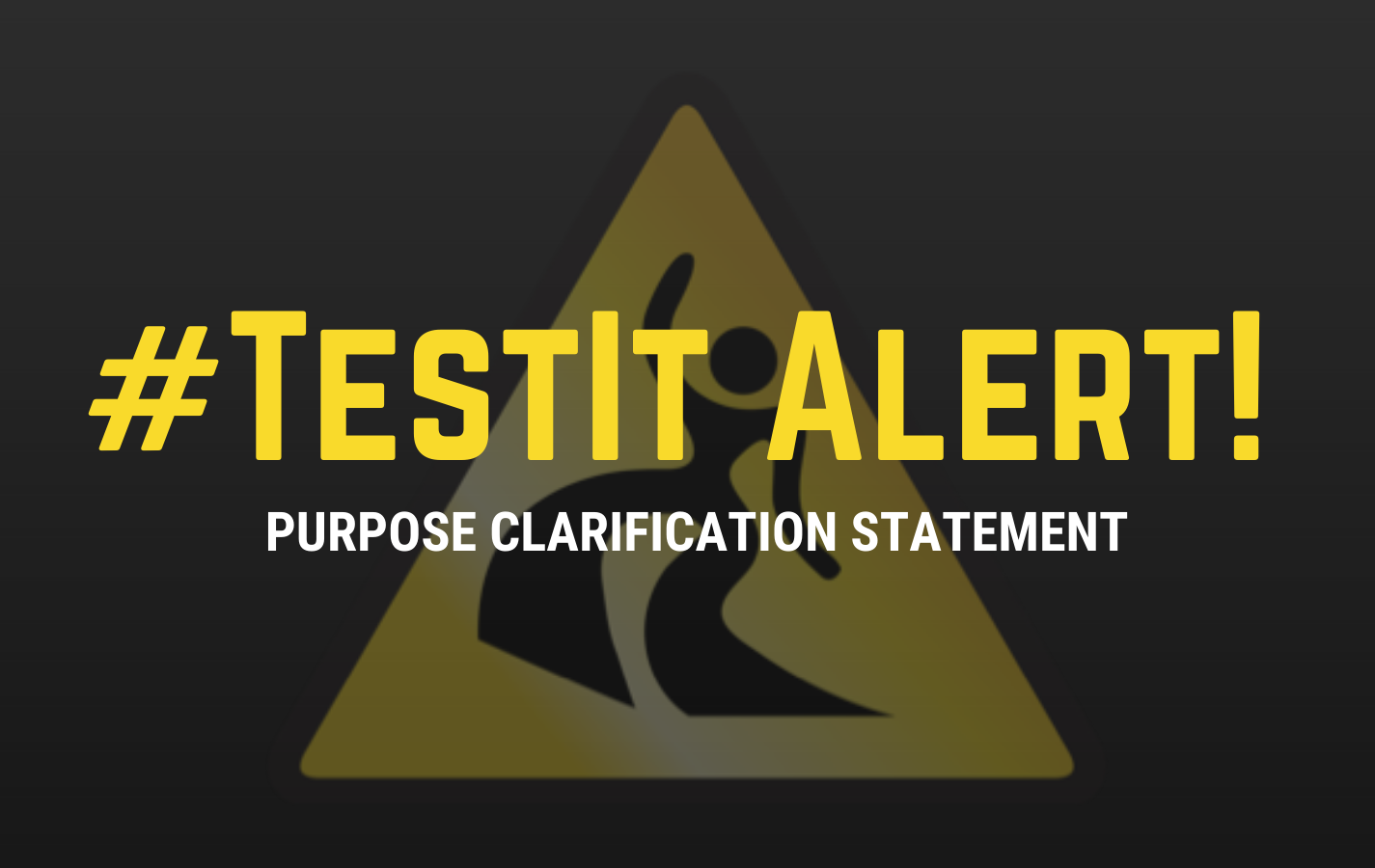Drug Checking
Over 1,100 novel substances have been reported to the United Nations as of December 2021. This doesn’t include the >20,000 FDA-approved pharmaceuticals in the U.S., or the >4,900 supplement ingredients, that are also circulating on the illicit market. Countless combinations of illicit, pharmaceutical, supplementary, and inert substances are being sold in every state in America, and the numbers climb every day.
Drug checking, sometimes known as pill testing or adulterant screening, is a harm reduction service that helps people make more informed decisions about their drug use.
Drug checking technology ranges from simple at-home tests that can give you basic frontline information about your drugs (like the kits and test strips we sell) to entire labs that are dedicated to running advanced analysis on samples. These services assist medical professionals and public health agencies in identifying trends in illicit drug markets.
DanceSafe is the oldest and only nonprofit drug checking kit manufacturer in the United States.
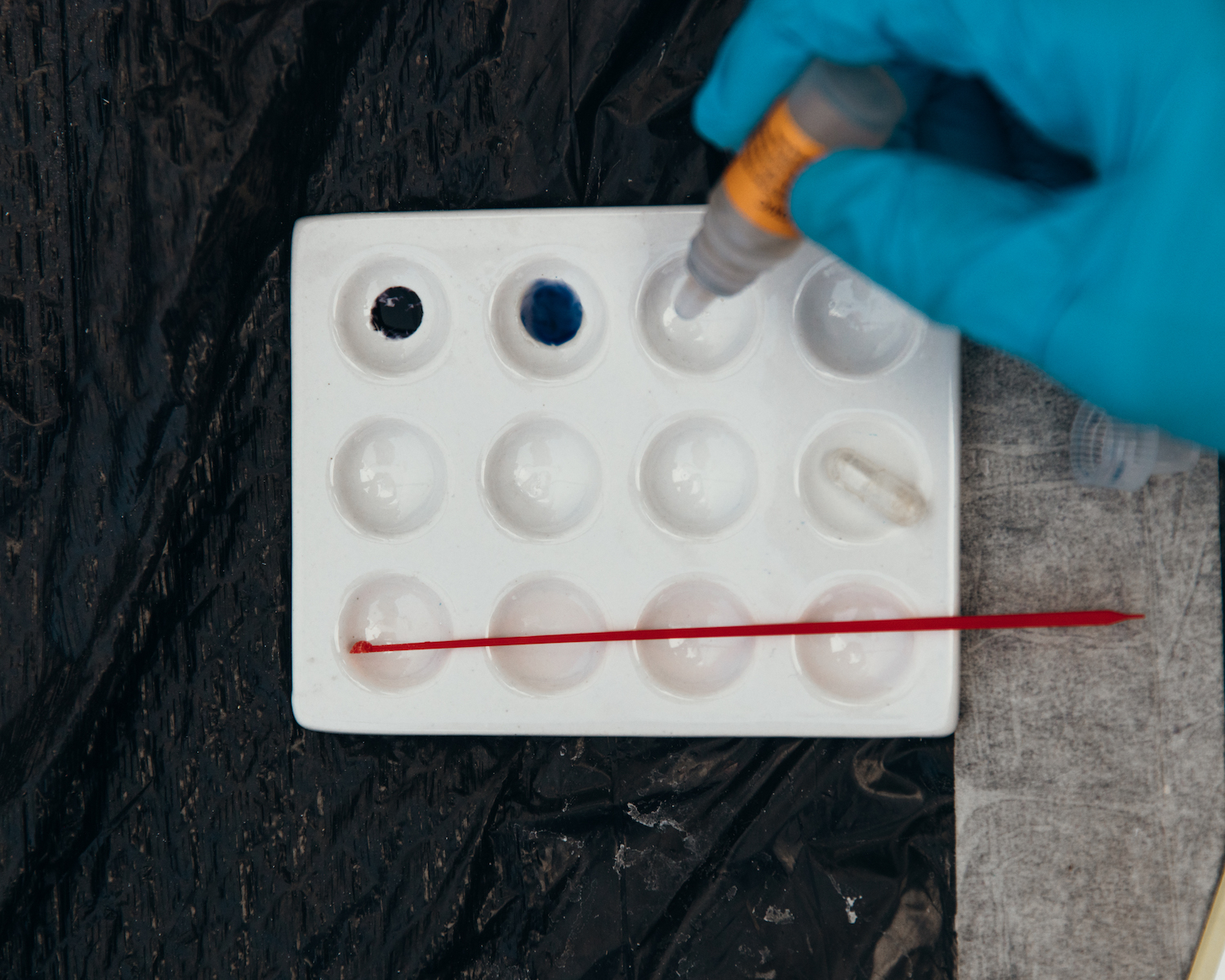
In Person
- DanceSafe is sometimes able to offer free on-site drug checking at events, with consent from event producers. No DanceSafe volunteers, event patrons, or event producers have ever been arrested or detained for providing or using drug checking services at events.
- Some organizations in the United States provide underground in-person drug checking services in facilities. These services may utilize at-home test kits and strips (like the ones we sell), or more advanced technology like FTIR (like the machines we bring to events when we’re able). To our knowledge, there are no in-person facilities in America where you can obtain proper confirmatory testing with lab equipment like GC/MS, although there are mail-in services like DrugsData.
- In countries like Canada, there are buildings where anyone can walk in and legally get their drugs tested by lab equipment.
At Home
- The most common drug checking method is purchasing materials to use at home, like reagent kits and test strips.
- These tools can’t tell you the purity or potency of your substance. Test strips can tell you whether a specific drug is present at all, while reagents cast a broader net and can indicate when something about your sample is not reacting as expected.
- We sometimes phrase this as looking for red flags, not green lights.
- It’s important to read our instructions fully before using at-home drug checking materials. It may be drug science, but it’s still science! (Physical copies of instructions are included with every purchase and are also available digitally on the product pages in our shop.)
By a Lab
- DanceSafe started a lab testing service in 1999. In July 2001, Erowid
founded its EcstasyData project and took over the mail-in lab analysis
service. The project was renamed DrugsData in 2019 to reflect the
broader nature of the samples being tested. Anyone can mail in a sample
(for a fee) and the results will be published on DrugsData.org - There are no other publicly accessible drug checking labs in the United States, although you can send a sample overseas to Energy Control or Kykeon Labs in Spain.
- Lab testing is by far the most accurate method of determining what’s in your drugs, and is the only way of actually confirming what they contain, but U.S. restrictions prevent DrugsData from telling you 1) the specific quantities of substances in your sample and 2) any inactive ingredients (like baking soda) it contains.
Drug Checking FAQ
There are multiple technologies available to check drugs, but only a few of them don’t require advanced equipment. The two most common and effective at-home drug checking tools are reagents and test strips (immunoassay strips).
Reagents and test strips have different purposes, strengths, and weaknesses. Neither can tell you exactly what is in your drugs.
Test strips are useful for telling you whether one specific type of drug is present in your sample at all. Test strips will only give you a “positive” or “negative” result.
- Each kind of test strip is specialized to detect a particular set of drugs. Fentanyl strips, for example, are only supposed to detect fentanyl and some of its “analogs” (drugs that are slight variations on fentanyl).
- Other strips, like amphetamine test strips, will react with any drug in the amphetamine class (ex. MDMA, meth, etc.).
- Test strips are used by diluting your drugs in water and dipping the strip into the mixture. It is very important to read and follow the instructions for using test strips or your results won’t be accurate.
- Strip testing does not destroy your drugs.
Reagents are useful for telling you more information about your drugs, specifically helping you figure out if something isn’t right. Reagents are corrosive liquids that can turn many different colors and may react with lots of different drugs. Each individual reagent (Marquis, Simon’s, etc.) has a unique set of color reactions.
- Reagents are used by dropping acidic chemicals onto small samples of your drug and observing the color changes. Each reagent has a set of “expected reactions” for a given substance, listed on the DanceSafe color chart. “Unexpected” reactions do not match the chart and are usually cause for suspicion.
- In general, drug checking means looking for “red flags, not green lights.” Reagents cannot confirm whether specific drugs are present in your sample, but they can help you make educated guesses. Only a lab can confirm the contents of any drug.
- Reagent testing does destroy the samples you test, but each test only requires a few milligrams of material.
Beware of any company that over-promises on what its drug checking materials can do. No at-home drug checking materials are sensitive enough to test for purity, OR confirm specific information about your drugs, including:
- telling you exactly what drug(s) you have (only a lab can confirm this);
- confirming/identifying the presence of multiple different drugs in your sample;
- inactive cuts (substances that won’t get you high, like dietary supplements);
- potency (strength).
Reagent testing, also known as “colorimetric” testing, involves dropping chemicals onto small samples of your drug and observing the color changes that take place.
Each “reagent” is a specific liquid chemical that reacts with a certain set of drugs. DanceSafe makes and sells nine different reagents, each of which has a unique set of color reactions with various drugs. Unlike test strips, which are specialized to only show a “positive” or “negative” result for a specific kind of drug, reagents can turn lots of different colors and react with a very wide variety of substances.
Example: Marquis reagent (usually just called “Marquis”) turns black in the presence of both MDMA and MDA. Simon’s reagent turns blue with MDMA and either doesn’t react or turns a muddy gray color with MDA.
You’ll almost always need to use more than one reagent at a time, since many reagents turn the same color with multiple drugs. While testing, ask yourself:
“Is this sample reacting as expected for [drug]? Are the color changes matching the DanceSafe chart?”
If the answer is no, you’ve just come across a red flag. This means that you’ve hit an unexpected snag in the test, and something isn’t right. There are two big mistakes people make while using reagents:
- attempting to figure out what exactly isn’t right (you can guess, but you cannot know for sure without lab analysis);
- assuming that a test without any red flags means that the test result is “good” or the drugs are “pure.”
Example:
- You’ve used Marquis reagent on a sample of suspected MDMA. As expected, Marquis turned black. Marquis can turn black with multiple things, however, so you still need more data points.
- To continue the test, you’d use Simon’s reagent on a new sample. An expected reaction for Simon’s and MDMA is a deep blue color.
- If Simon’s doesn’t turn blue, you know that something isn’t right. You can’t know what, exactly, without sending your sample to a lab.
- If Simon’s does turn blue, all you know is that the sample is still reacting as expected and hasn’t given you any red flags yet.
My test didn’t have any red flags. Why doesn’t that mean that my drugs are pure?
An historical example of this is the great MDMA shortage of 2009-2017. Several tons of MDMA and its synthesis materials (ingredients) were destroyed in 2008, leading to a global reduction in MDMA availability.
Some suppliers figured out that two substances, PMMA and PMA, did not react with the Marquis reagent (which is commonly used to test drugs sold as MDMA). Pressed pills that contained about 90% PMMA and 10% MDMA entered the market. The black MDMA reaction overshadowed the non-reactions of PMMA and PMA, making reagent tests appear to react as expected – no red flags.
Many things can influence the final color reaction of reagents: precursors, adulterants, bulking agents, organic or inorganic impurities, even the color of the surface you’re testing on. Obviously wrong reactions – like Marquis turning yellow instead of black with something sold as MDMA – can be interpreted more confidently. Test with humility, and assume that you’re missing information.
Even the most seasoned drug checking experts should only use reagents to tell if something might be wrong with their sample – NEVER to confirm the contents or quality of the drug. Remember: there are at least 25,000 substances in circulation as of 2023.
No reagent can test for fentanyl. Do not trust any liquid chemical that’s marketed to be able to do so.
You can read all about this in our instructional pamphlet, and you can buy reagents here.
Strip testing, also known as “immunoassay” testing, involves 1) diluting your drugs in a certain amount of water and 2) dipping a test strip into the mixture to get a positive or negative result for the presence of a particular kind of drug. This test is very useful for determining if one specific type drug (like fentanyl and its analogs) is in your sample at all.
Keep in mind: Each type of strip will be able to detect the presence of a certain set of drugs. Amphetamine test strips, for example, may give a positive result if they detect amphetamine, methamphetamine, MDMA, 4-fluoroamphetamine, and so on. Only a lab can tell you exactly what’s in your sample, but test strips are very helpful for determining whether:
- Something you want might be present in your sample at all.
- Example: You bought some Xanax bars on the internet.
- A positive benzo strip test can’t give you any information about what specific benzo might be present, but it can tell you whether your pill contains any kind of benzo at all.
- A negative benzo strip test might indicate that your pill contains something else entirely.
- Example: You bought some Xanax bars on the internet.
- Something you don’t want appears to be present in your sample.
- Example: You bought some cocaine and want to use an amphetamine strip to see if it contains amphetamine of any sort, which isn’t what you’re looking for.
- Example: You bought some cocaine and want to use a fentanyl strip to see if it’s been contaminated with a fentanyl-type drug.
Test strips are actually urine strips that have been repurposed for use in drug checking. This is an important concept to understand: you can read more about it here.
Since immunoassay strips are very sensitive, it is extremely important to read and follow our instructions for each kind of strip. Not all brands of strips work the same. You can read more about our fentanyl test strips in our instructional pamphlet, and you can buy test strips here.
Organic material (like plant matter and fungi) is difficult, if not impossible, to test with at-home tools. We rarely advise trying to test organic materials.
As of late 2022 we are only aware of one case of fentanyl contamination in cannabis that has actually been confirmed by a lab, while all other claims are either unverified or have been debunked. If the situation changes we’ll update our advisory accordingly. We are not aware of any cases of fentanyl contamination in mushrooms that we haven’t personally disproven.
Be aware that many cannabis-related products sold in head shops and smoke shops may have poor quality control, and sometimes contain pesticides, heavy metals, or no cannabinoids at all.
Medical emergencies from synthetic cannabinoids (which you may know as “Spice” or “K2”) are sometimes misattributed to fentanyl. Buy from licensed dispensaries when possible, and always look for quality control information on the packaging of any weed that’s bought from any non-dispensary source.
Note: Testing magic mushrooms isn’t useful, but you should examine the shrooms to make sure they’re not a different (potentially poisonous) species altogether. Websites like the Shroomery can help with identification.
#TestIt is an awareness program that highlights the importance of drug checking and illuminates illicit drug market trends across the U.S. #TestIt alerts are periodically released about adulterated drugs, serving as an early warning system for novel substances OR a caution about a high-risk regional trend.
You can see recent #TestIt Alerts here. For more in-depth information about novel psychoactive substances detected in the United States, you can sign up for the NPS Discovery newsletter.
Most states have laws defining drug checking tools as drug paraphernalia, making it illegal (to varying degrees) to possess or distribute reagent test kits and fentanyl test strips. However, DanceSafe has shipped hundreds of thousands of drug checking tools to all 50 states over the past 24 years. We aren’t aware of a single case where anyone has been arrested just for purchasing or possessing drug checking tools like reagent kits or fentanyl test strips.
Many states have recently changed their laws to remove drug checking tools from the “drug paraphernalia” definition in an effort to combat the overdose crisis. Recent reforms to drug paraphernalia laws show a positive trend of state governments acknowledging drug checking tools as an important public health intervention. These meaningful policy reforms are in alignment with the CDC recently acknowledging the public health benefits of drug checking.
Again: In the last 24 years of shipping reagents and test strips across the country, we are not aware of any criminal cases where someone has been charged for possession of just a drug checking kit. There have been some cases where people had extra paraphernalia charges tacked on to their case if they were arrested for other drug charges, and happened to also be in possession of drug checking materials.
If you are concerned, you can review the drug checking laws in your state (as of mid-2022) here.


